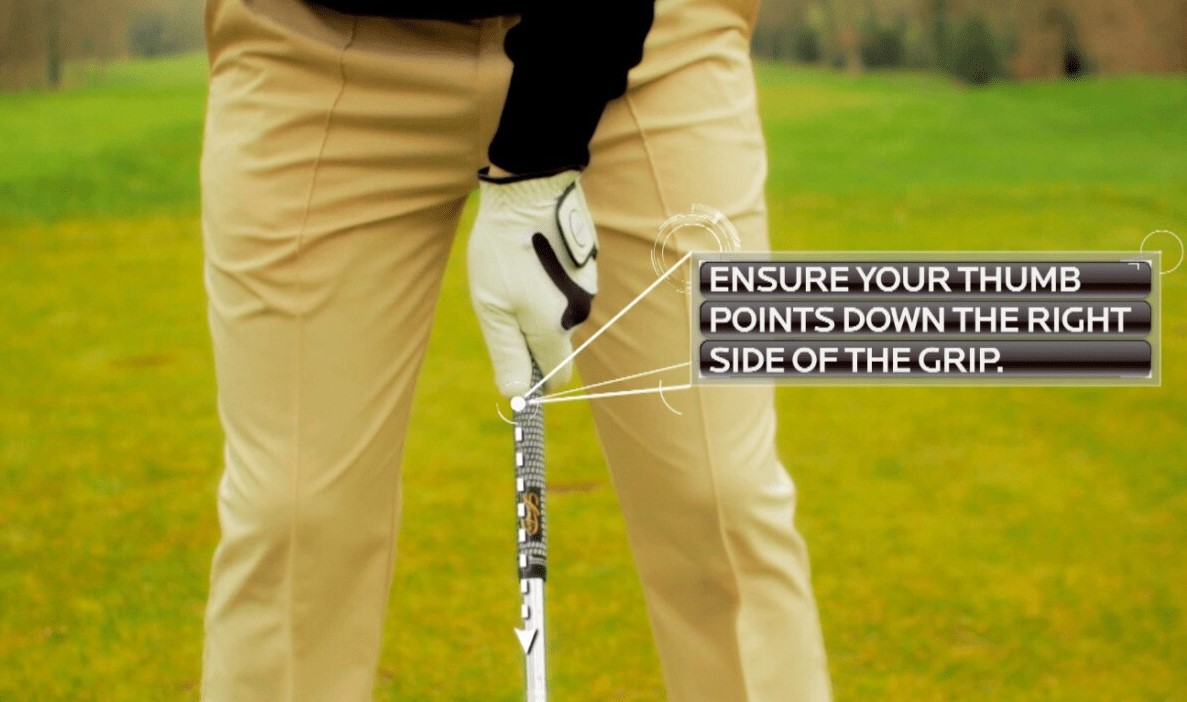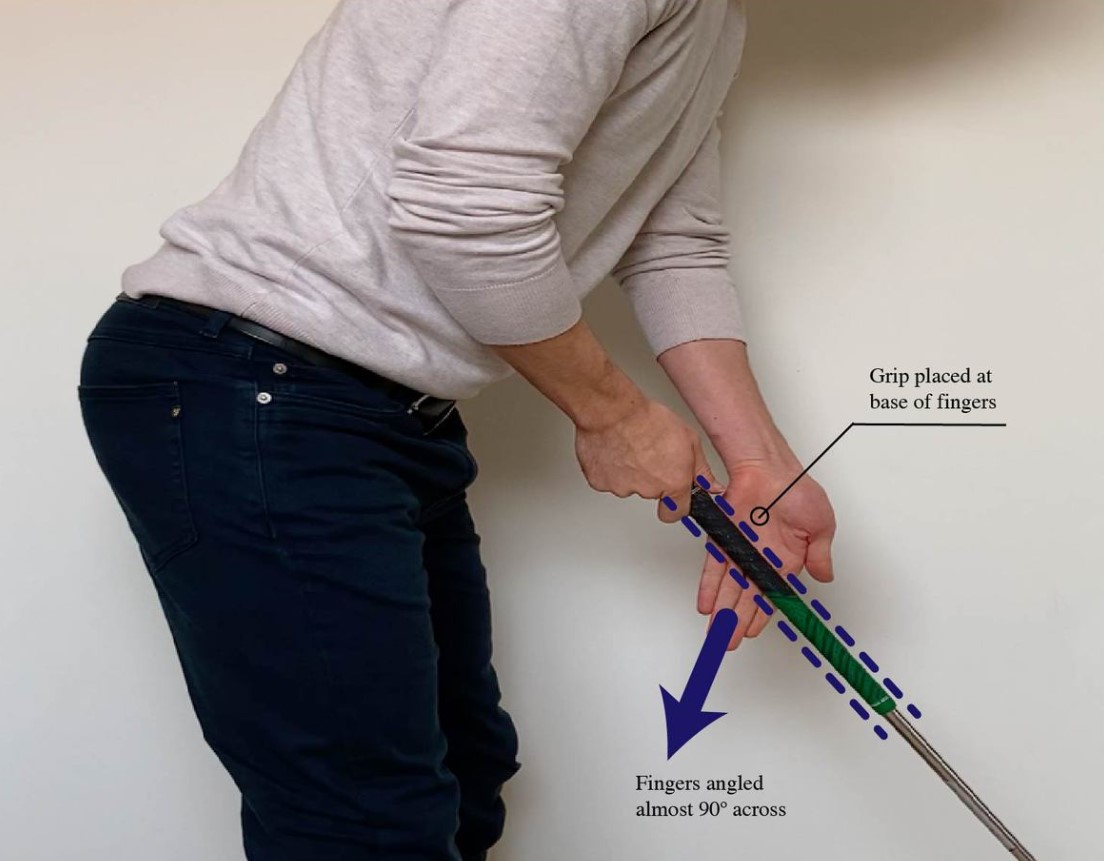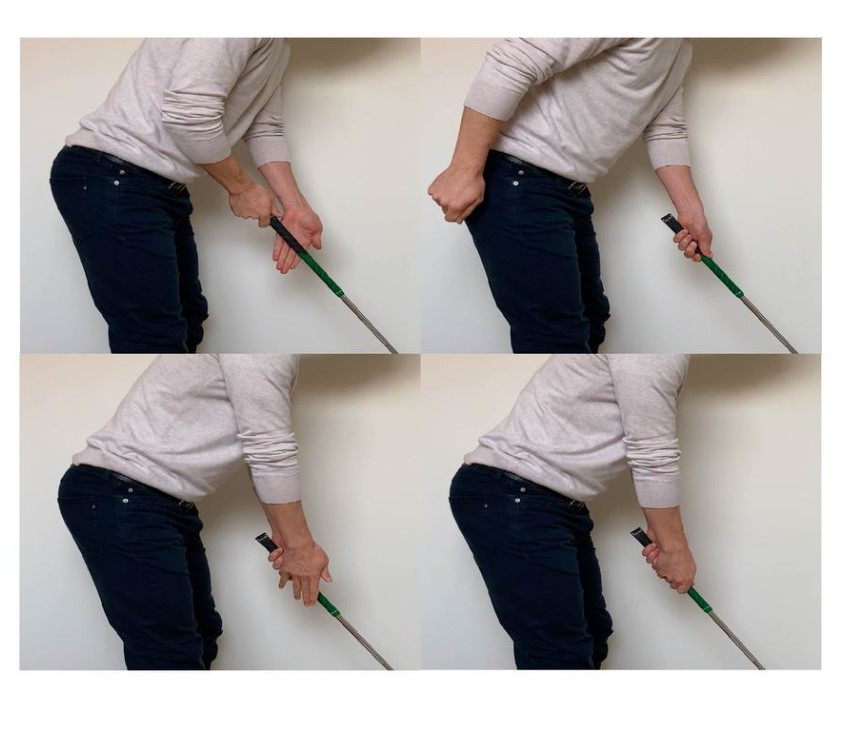Introduction
Your golf grip is the only connection you have with the club – consequently, it is pretty important. Here we’ll walk you through how to hold a golf club and answer all of these little questions players have when learning this important skill.
Simple Guide to Holding a Golf Club
If you’re in a hurry and about to hit the 1st tee, check out the step-by-step images below. If you’re not in a rush, stay around for the whole article. Understanding the details of a great golf grip is probably one of the most valuable technical assets you can develop to help you achieve your golfing dreams.
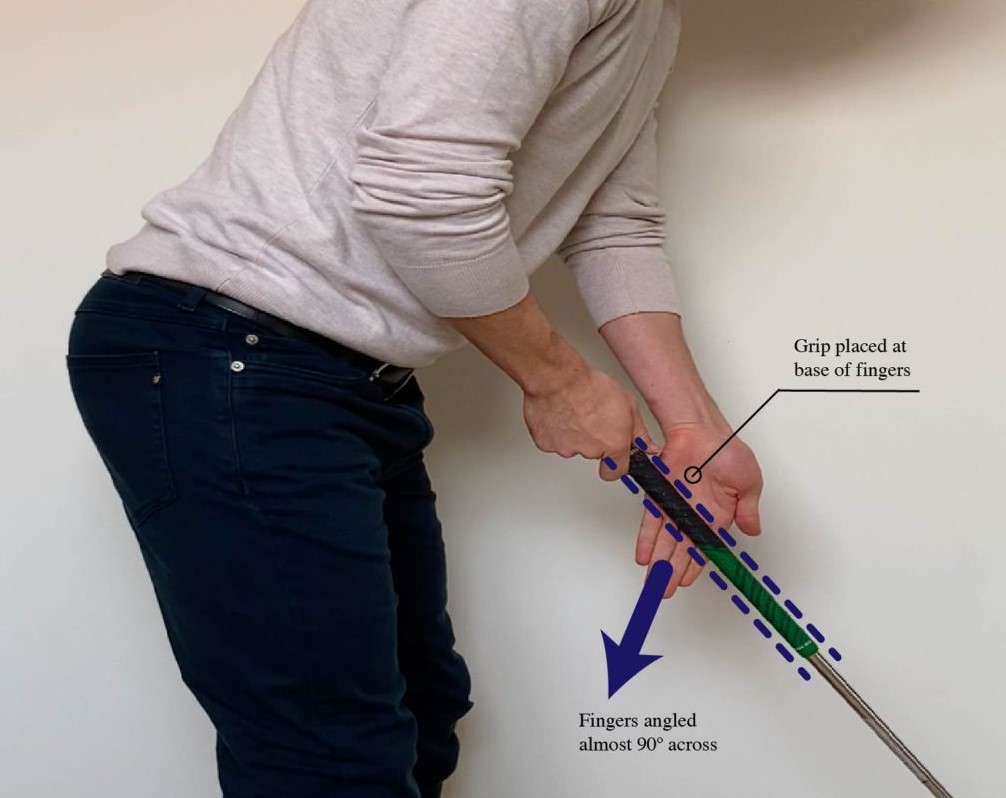
Step-by-Step Instructions
- Start by securing the top of the grip with your right hand.
- Place your left hand against the grip from the side, with your fingers pointing down towards the ground.
The grip should run from the middle joint of your index finger to the base of your small finger. Once your left hand is in place, wrap your fingers around the club and position your right hand onto the grip.
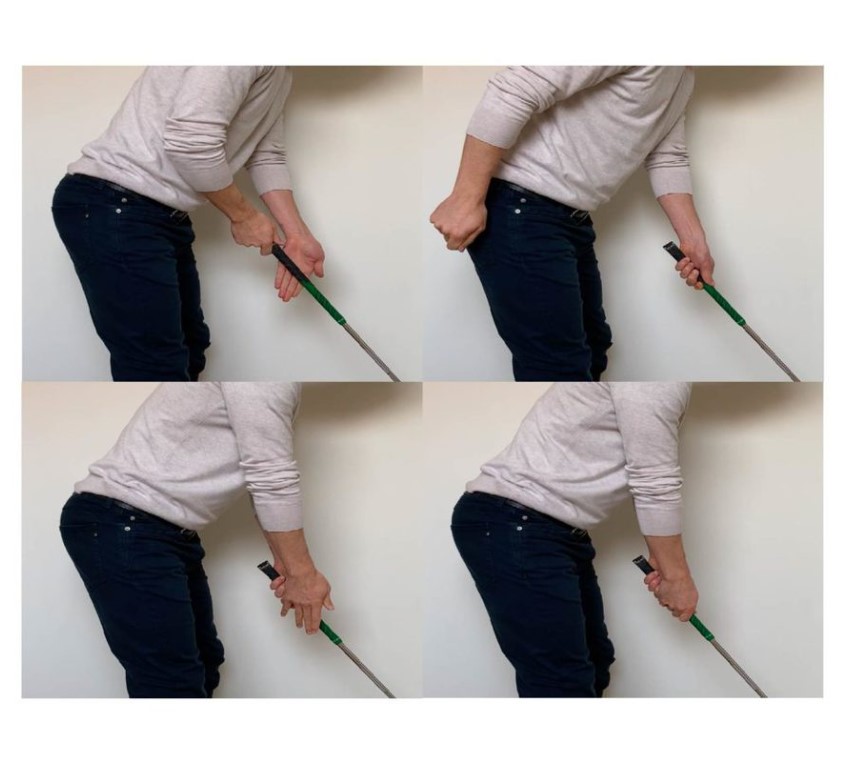
Images for Reference
Use the top two images below to check out what your completed left hand grip should look like in a mirror. When you have your left hand in this position, wrap your hand around the grip (top right left image).
Finer Details of Grip
Grip Pressure
In terms of general grip pressure, a good strategy is to imagine you are holding a banana and you have to eat the remains after your golf shot. Too light and the banana will fly out of your hands, but squeezing too tight will turn the banana into mush.
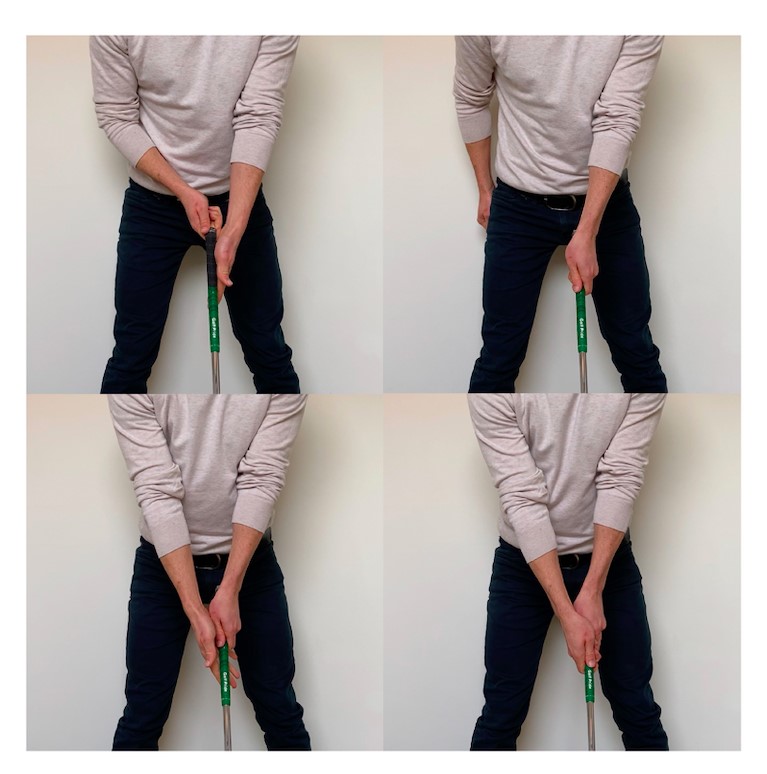
Most golfers are guilty of gripping too hard and squeezing the club to death. Too much grip pressure results in co-contraction of muscles in your forearms, less wrist hinge, and reduced club head speed. A second common consequence of a tight golf grip is less rotation of the forearms during the backswing and/or downswing.
Linking Hands Together
Notice how in the completed golf grip the hands sit closely together as if they are one unit. This is a key feature that all great golfers have. It ensures you are applying forces to the golf club about the same point – rather than the two hands fighting against one another.
Both interlocking and overlapping grips are a great way to unite your hands – choose one and stick with it, there is no performance reason for you to change between the two.
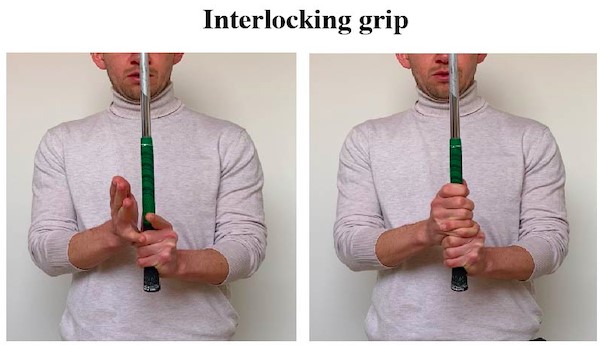
Thumb Position
You’ll notice all images and videos of the left hand grip show the thumb slightly pulled up (flexed). Your left thumb is one of the major contact points and helps control the golf club. It should fall directly under the club shaft at the top of your backswing and stop the club slipping or bouncing.
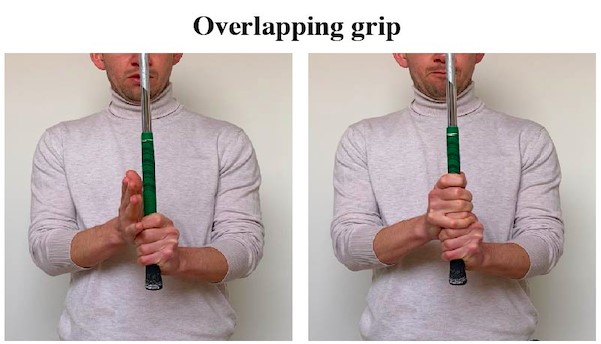
A shortened left thumb allows you to apply more force and keep control of the golf club. Whereas, when your thumb is fully extended it has less capacity to apply force and control the club.
Importance of a Correct Golf Grip
Roughly 80% of the direction of your golf shots is a result of where your clubface points at impact – we call this club face angle. The most critical factor in hitting the golf ball towards your target is squaring the club face at impact – 61 to 83% of the ball’s start direction, and around 80% of total lateral error is caused by a non-square club face at impact.
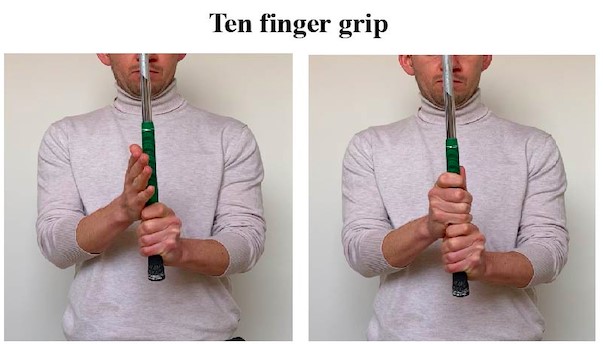
Your golf grip is the only link between your entire golf swing and where your golf club points (club face angle). By changing your golf grip and keeping your entire golf swing as it is, you can make considerable improvement to your club face at impact and therefore the accuracy of your shot.
For example, most golfers who suffer from a slice or a hook do so because their club face is just 3-4º open or closed. This can be completely fixed by changing your golf grip by 3-4º.
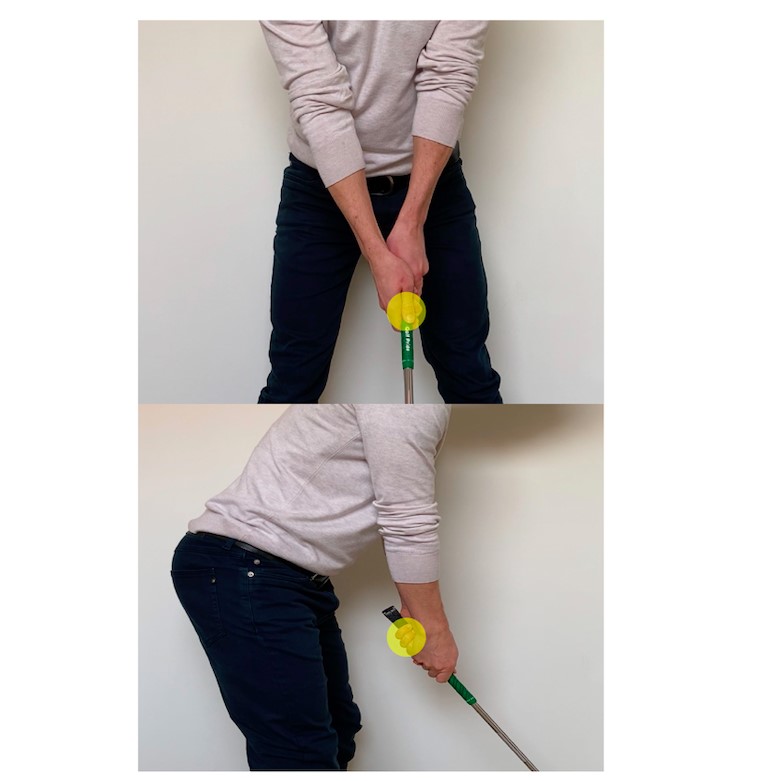
How Your Golf Grip Links to Swing Mechanics
Golf is a game of timing. The better your golf grip, the less you will require perfect timing to square up the club face. The correct golf grip means that when your arms are in a neutral position, the clubface will automatically be square.
A bad golf grip requires you to manipulate and force the club face square. For slicers, this will feel as though you’re flipping your arms and hands over to get the club face square – forcing your hands to rotate past their natural position in time for impact.
For golfers with a hook, you will be familiar with the feeling of holding onto the golf club for dear life, praying that the club face doesn’t turn over too early through impact. This feeling is just your hands and arms wanting to get back to neutral and you trying to stop them from doing so.
Now we know how your golf grip links to your golf swing mechanics and club face, we can easily explain why certain golf grips cause you to slice and hook.
Altering Your Golf Grip
Below are videos demonstrating techniques for altering your golf grip. The key factor is to start with both hands twisted round from where you will be used to having them. Ensure when you alter your grip, you do so with the clubface pointing to the target.
Adjusting Top Hand
Adjusting Bottom Hand
Grip for Different Shots
Keep your golf grip the same for all your full iron shots, driver, fairway wood, and hybrid shots. Grip consistency will help with overall consistency in your swing and ball striking.
When hitting shots inside 50-yards, you may find it helpful to grip lower down the club – towards the bottom of your golf grip. This will give you more control and allow you to make a more positive chipping or pitching action.
However, when it comes to putting, the grip should be different. Proper putting grip plays a crucial role in your putting stroke and control. To learn the proper putting grip, check out our guide.
Conclusion and Additional Resources
A great golf grip is the foundation of becoming a great golfer. It affects the direction and accuracy of your shots. By understanding the importance of a correct golf grip and making necessary adjustments, you can improve your game significantly.
Remember to experiment with your new grip, test different ball flights, and determine your optimal golf grip based on the results you observe. It is also helpful to practice with your new grip in chipping and use a golf grip trainer for additional feedback.
Honing your golf grip is a continuous process, so keep practicing and refining your technique. If you have any other questions about the golf grip, feel free to ask in the comments below. And if you want more golf-related articles, join the Golf Insider newsletter for regular updates.
Happy golfing!

